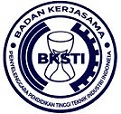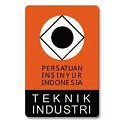Jewelry Set Design Based on the Adaptation of the Keris Shape
Abstract
Jewelry is a form of cultural and artistic wealth. Apart from that, jewelery products have also spread to the global market in various major countries, this is evident from data on jewelery exports in Indonesia which have increased by up to 24.21% even in the midst of the Covid-19 pandemic. In modern life, of course, there are many women who want to beautify themselves with jewelery because the main users of this jewelery are women, but the jewelery that we often see has simple geometric shapes, therefore a strategy is needed to implement cultural values into everyday product. One form of culture that we have is the keris. Keris is a kind of dagger that functions as a weapon or spiritual object. In addition, the keris is also popular as a collection item that has high value from an aesthetic point of view because it has interesting artistic elements. The artistic elements contained in the keris can also be implemented into products that we use every day, namely jewelry. This writing aims to design jewelry by taking several parts of the keris which will be adapted into jewelry forms in order to provide innovation in the form of jewelry that has a novelty value without losing the characteristics of the keris.
Full Text:
PDFReferences
C. Wang, “Strength design of porous materials using B-spline based level set method,” Comput. Methods Appl. Mech. Eng., vol. 418, 2024, doi: 10.1016/j.cma.2023.116490.
L. Hu, “Optimal Weighting Factor Design of Finite Control Set Model Predictive Control Based on Multiobjective Ant Colony Optimization,” IEEE Trans. Ind. Electron., vol. 71, no. 7, pp. 6918–6928, 2024, doi: 10.1109/TIE.2023.3301534.
Z. Chen, “An Elderly-Oriented Design of HMI in Autonomous Driving Cars Based on Rough Set Theory and Backpropagation Neural Network,” IEEE Access, vol. 12, pp. 26800–26818, 2024, doi: 10.1109/ACCESS.2024.3366548.
Z. Huang, “Preference-based multi-attribute decision-making method with spherical-Z fuzzy sets for green product design,” Eng. Appl. Artif. Intell., vol. 126, 2023, doi: 10.1016/j.engappai.2023.106767.
S. J. van den Boom, “A level set-based interface-enriched topology optimization for the design of phononic crystals with smooth boundaries,” Comput. Methods Appl. Mech. Eng., vol. 408, 2023, doi: 10.1016/j.cma.2023.115888.
H. Li, “Joint Radar and Communications Waveform Design Based on Complementary Sequence Sets,” Remote Sens., vol. 15, no. 3, 2023, doi: 10.3390/rs15030645.
N. J. Shallcross, “Informing Program Management Decisions Using Quantitative Set-Based Design,” IEEE Trans. Eng. Manag., vol. 70, no. 9, pp. 3213–3228, 2023, doi: 10.1109/TEM.2021.3078387.
R. Li, “An integrated group decision-making method for brand packaging design effect evaluation based on the 2-tuple linguistic Pythagorean fuzzy sets,” J. Intell. Fuzzy Syst., vol. 45, no. 2, pp. 2167–2177, 2023, doi: 10.3233/JIFS-232054.
M. Nakagawa, “Level set-based multiscale topology optimization for a thermal cloak design problem using the homogenization method,” Int. J. Heat Mass Transf., vol. 207, 2023, doi: 10.1016/j.ijheatmasstransfer.2023.123964.
P. Zhang, “Optimal Design of Electrode Topology of Dielectric Elastomer Actuators Based on the Parameterized Level Set Method,” Soft Robot., vol. 10, no. 1, pp. 106–118, 2023, doi: 10.1089/soro.2021.0169.
Y. Luo, “A design model of FBS based on interval-valued Pythagorean fuzzy sets,” Adv. Eng. Informatics, vol. 56, 2023, doi: 10.1016/j.aei.2023.101957.
L. Zhang, “Level set-based topological design of multiphase micro-architectured materials using alternating active-phase method,” Mater. Des., vol. 225, 2023, doi: 10.1016/j.matdes.2022.111448.
Z. Qiang, “Multi-stage design space reduction technology based on SOM and rough sets, and its application to hull form optimization,” Expert Syst. Appl., vol. 213, 2023, doi: 10.1016/j.eswa.2022.119229.
Z. Feng, “Fuzzy-based asynchronous controller design on reachable set synthesis of nonlinear hidden Markovian jump systems,” Chaos, Solitons and Fractals, vol. 170, 2023, doi: 10.1016/j.chaos.2023.113340.
Q. Ma, “A novel MCDM approach for design concept evaluation based on interval-valued picture fuzzy sets,” PLoS One, vol. 18, no. 11, 2023, doi: 10.1371/journal.pone.0294596.
W. Li, “A novel design of multi-user sequence set for joint vehicular radar-communication based on Oppermann family,” Digit. Signal Process. A Rev. J., vol. 141, 2023, doi: 10.1016/j.dsp.2023.104119.
Z. Sheng, “Concurrent topology optimization of multiple components sharing partial design domain based on distance regularized parameterized level set method,” Int. J. Numer. Methods Eng., vol. 124, no. 15, pp. 3352–3386, 2023, doi: 10.1002/nme.7250.
B. Hu, “Propeller design rule extraction based on rough set theory,” Hangkong Dongli Xuebao/Journal Aerosp. Power, vol. 38, no. 8, pp. 1901–1908, 2023, doi: 10.13224/j.cnki.jasp.20210645.
W. Chen, “A novel group decision making model based on Interval neutrosophic sets for product modeling design quality evaluation,” J. Intell. Fuzzy Syst., vol. 45, no. 6, pp. 9771–9783, 2023, doi: 10.3233/JIFS-233825.
M. Ström, “A set-based-inspired design process supported by axiomatic design and interactive evolutionary algorithms,” Int. J. Prod. Dev., vol. 27, no. 3, pp. 186–212, 2023, doi: 10.1504/IJPD.2023.133054.
J. Hao, “A Decision-Making Method for Design Schemes Based on Intuitionistic Fuzzy Sets and Prospect Theory,” Symmetry (Basel)., vol. 15, no. 8, 2023, doi: 10.3390/sym15081570.
G. Işık, “Design of acceptance sampling plans based on interval valued neutrosophic sets,” Soft Comput., vol. 27, no. 20, pp. 14601–14619, 2023, doi: 10.1007/s00500-023-09027-6.
T. Driesen-Micklitz, “A Set of Design Principles for Personalized Information in Automated Driving User Interfaces Based on Theory and Empirical Evidence,” IEEE Intelligent Vehicles Symposium, Proceedings, vol. 2023. 2023. doi: 10.1109/IV55152.2023.10186755.
G. T. Gustafson, “To design, or not to design? Comparison of beetle ultraconserved element probe set utility based on phylogenetic distance, breadth, and method of probe design,” Insect Syst. Divers., vol. 7, no. 4, 2023, doi: 10.1093/isd/ixad014.
C. Bhoyar, “Design of an efficient IoT based irrigation platform via fuzzy bioinspired multisensory analysis of on-field parameter sets,” Transdiscipl. J. Eng. Sci., vol. 14, p. 107, 2023, doi: 10.22545/2022/00225.
D. Liu, “The design of multi-wavelength confocal diffractive optical element based on set operation,” Optik (Stuttg)., vol. 277, 2023, doi: 10.1016/j.ijleo.2023.170667.
H. Li, “Optimum design and thermal modeling for 2D and 3D natural convection problems incorporating level set-based topology optimization with body-fitted mesh,” Int. J. Numer. Methods Eng., vol. 123, no. 9, pp. 1954–1990, 2022, doi: 10.1002/nme.6923.
Y. Noguchi, “Level set-based topology optimization for the design of labyrinthine acoustic metamaterials,” Mater. Des., vol. 219, 2022, doi: 10.1016/j.matdes.2022.110832.
A. L. Kaplan, “Structure-Based Design of a Chemical Probe Set for the 5-HT5A Serotonin Receptor,” J. Med. Chem., vol. 65, no. 5, pp. 4201–4217, 2022, doi: 10.1021/acs.jmedchem.1c02031.
H. Jiang, “Anti-frost heave design method for a parabolic canal based on the hydraulic optimal solution set in seasonally frozen regions,” Cold Reg. Sci. Technol., vol. 193, 2022, doi: 10.1016/j.coldregions.2021.103433.
H. Emmendoerfer, “A level set-based optimized design of multi-material compliant mechanisms considering stress constraints,” Comput. Methods Appl. Mech. Eng., vol. 391, 2022, doi: 10.1016/j.cma.2021.114556.
DOI: http://dx.doi.org/10.24014/jti.v10i1.25088
Refbacks
- There are currently no refbacks.
Copyright (c) 2024 Chairunnisa Rania Humaira, Edwin Buyung Syarif, Fajar Sadika

This work is licensed under a Creative Commons Attribution-NonCommercial-ShareAlike 4.0 International License.
Jurnal Teknik Industri
P-ISSN 2460-898X | E-ISSN 2714-6235
Published by:
Industrial Engineering Department
Universitas Islam Negeri Sultan Syarif Kasim Riau, Indonesia
Office Address:
H.R. Soebrantas KM 15.5, Tampan, Pekanbaru, Riau, Indonesia 28293
email: jti.fst@uin-suska.ac.id
Indexed by:
JTI : Jurnal Teknik Industri under a Creative Commons Attribution-NonCommercial-ShareAlike 4.0 International License.

















